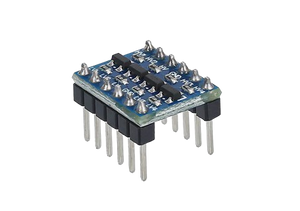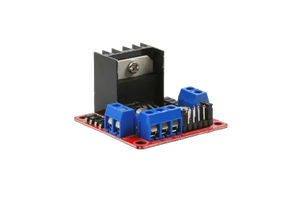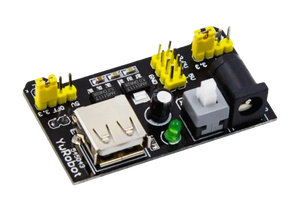
What is the ADS1115?
The ADS1115 is a high-precision, 4-channel, 16-bit analog-to-digital converter (ADC) designed for a wide range of applications, from sensor arrays to IoT projects. This versatile ADC is compatible with Raspberry Pi, Arduino, and ESP32, making it an essential tool for anyone needing precise analog-to-digital conversion. With its programmable gain amplifier (PGA) and I2C interface, the ADS1115 ensures accurate measurements and easy integration with various microcontrollers.
Explore More About This Product
Check out these videos and articles to gain deeper insights into how you can make the most of this product:
Operating Mechanisms of the ADS1115
The ADS1115 operates by utilizing its integrated sensors to measure analog signals with high precision. Here's a breakdown of its operating mechanisms:
- High-Precision ADC: The ADS1115 is a 16-bit ADC, which means it can convert an analog signal into a digital value with very high precision. This is perfect for applications requiring fine-tuned sensor data.
- Programmable Gain Amplifier (PGA): The integrated PGA allows for the adjustment of input signal ranges, enhancing the ADC's versatility and accuracy.
- Versatile Voltage Support: The ADS1115 supports an expansive voltage supply range from 2.0V to 5.5V, making it suitable for various project requirements with differing power inputs.
- Low Power Consumption: The ADS1115 is designed to optimize energy consumption. In Continuous Mode, it draws a mere 150µA, and in Single-Shot Mode, it enters Auto Shut-Down to ensure minimal power usage when not actively converting analog signals.
- Communication Interface: The ADS1115 communicates with microcontrollers via the I2C interface, allowing for easy integration with devices like the Raspberry Pi, Arduino, and ESP32.
By combining these mechanisms, the ADS1115 provides a comprehensive solution for high-precision analog-to-digital conversion, making it an essential component in many modern electronic projects.
Pins


ADS1115 Pinout
VCC (Power Supply: +2.0V to +5.5V)
This pin is used to supply power to the ADS1115. The sensor operates within a voltage range of 2.0V to 5.5V.
Connection: Connect this pin to the 3.3V or 5V power supply from your microcontroller or development board.
GND (Ground)
This pin is the ground connection for the sensor. It should be connected to the ground of your power supply or microcontroller.
Connection: Connect this pin to the ground (GND) of your microcontroller or development board.
SCL (Serial Clock)
This pin is used for the I2C clock signal. It synchronizes the data transfer between the ADS1115 and the microcontroller.
Connection: Connect this pin to the I2C clock pin (SCL) on your microcontroller.
SDA (Serial Data)
This pin is used for the I2C data signal. It is used for bidirectional data transfer between the sensor and the microcontroller.
Connection: Connect this pin to the I2C data pin (SDA) on your microcontroller.
A0, A1, A2, A3 (Analog Inputs)
These pins are used to connect the analog voltage sources you want to measure. Each of these pins can be configured to measure the voltage independently or in differential mode. Differential mode allows the measurement of the voltage difference between two input pins, which is useful for certain types of sensors and applications.
Connection: Connect each analog input to the voltage source you want to measure. The ADS1115 can handle input voltages from 0V to VCC, but with a programmable gain amplifier (PGA) inside the ADS1115, you can set up different gains for measuring smaller voltages more accurately.
Technical Specifications
| Specification | Details |
|---|---|
| Interface | I2C |
| Input Voltage | 2.0V to 5.5V |
| ADC Bit Rate | 16 Bit |
| Data Rate | 8sps to 860sps |
| Channels | 4 Channel AN0 AN1 AN2 AN3 |
| Dimensions | 28.3 × 18mm |



